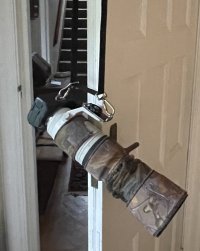Well, this will be a can of worms!
The definition of art vs photography is pretty grey at best. I would suggest that all images from digital sensors are art but YMMV.
A digital sensor is a piece of silicon (computer designed and controlled manufacture) with photodiodes digitally recording light intensity at a point in space and then requires a computer to show the image, That's a pretty good definition of computer generated image.
The art is how it is interpreted by Canon (colour science etc) for SooC images which are jpegs. But most of us are recording in raw and post process in Adobe camera raw and then the editor's choice of computer tools (eg LR/PS) to digitally modify the image on a computer even further. Only film is a physical/chemical process to produce an image.
But let's go further for the definition of computational photography from WIkipedia using the taxonomy proposed by Shree Nayari....
Computational photography refers to digital image capture and processing techniques that use digital computation instead of optical processes.
Computational photography can improve the capabilities of a camera, or introduce features that were not possible at all with film based photography, or reduce the cost or size of camera elements. Examples of computational photography include in-camera computation of digital panoramas, high-dynamic-range images, and light field cameras. Light field cameras use novel optical elements to capture three dimensional scene information which can then be used to produce 3D images, enhanced depth-of-field, and
selective de-focusing (or "post focus").
=> this was one element of my comment on rawnerf.
The definition of computational photography has evolved to cover a number of subject areas in computer graphics, computer vision, and
applied optics.
=> I would include Canon's digital distortion correction SW to the applied optics to provide more usable wide angle images with smaller lenses.
These areas are given below, organized according to a taxonomy proposed by Shree K. Nayar. Within each area is a list of techniques, and for each technique one or two representative papers or books are cited.
Deliberately omitted from the taxonomy are image processing (see also digital image processing) techniques applied to traditionally captured images in order to produce better images. Examples of such techniques are image scaling, dynamic range compression (i.e. tone mapping), color management, image completion (a.k.a. inpainting or hole filling), image compression, digital watermarking, and artistic image effects.... Also omitted are techniques that produce
range data,
volume data,
3D models,
=> this last point would apply to rawnerf's application of denoise and 3D models.
I was using computational photography for the processing of images on phones that were better than would otherwise be due to their severely limited optical lenses and small sensors.
Overall, I will be more careful in the future to use "computational photography" phrase more accurately but in general, I am happy with how I applied the term.

